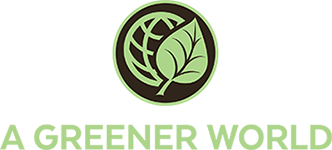Find AWA Grassfed Beef and Pastured Pork at 130 Whole Foods Market locations
In response to many ongoing requests asking whether Animal Welfare Approved products are available in Whole Foods Market stores, the answer is YES! This holiday season, in addition to purchasing your AWA meat directly from the farm, CSA, farmers’ markets, co-ops, or buying clubs, you can shop at more than 130 Whole Foods Market locations and find Animal Welfare Approved grassfed beef and pastured pork products. While Animal Welfare Approved farmers supply numerous Whole Foods Market locations, typically it has been difficult for consumers to find Animal Welfare Approved products at these stores because most AWA products will lack the familiar AWA label. And since Whole Foods Market stores offer a variety of meat products from a host of different sources, consumers need to ask for Animal Welfare Approved products by the specific farm or farm group where the animals were raised on pasture or range.
Tell Us Why You Are Thankful for Family Farmers
We at Animal Welfare Approved are privileged to work with some of the most amazing farmers in the world. They are leading the transition back to pasture-based farming, and pioneering a new agriculture that seeks to heal our planet while providing healthy, nutritious food to all. This year, as you prepare for a holiday that celebrates the bountiful harvest farmers have provided, we ask you to take a moment to thank a family farmer for the good food that nourishes you. Join us in celebrating National Farm-City Week by using the comments section of this blog to tell us about the farms that will fill your Thanksgiving table this holiday season and throughout the year, and why they matter to you. Take a moment to write a few words of thanks to your neighbor farmers, farmers from your farmer’s market, your CSA provider, and any family farmer you appreciate.
Cooperative Inspection Ruling: Comment Period Extended
In a recent post we discussed the ruling currently under construction at the USDA’s Food Safety and Inspection Service (FSIS) which would allow certain state-inspected slaughter plants to perform federal inspections on meat and poultry. The comment period has been extended, and we invite anyone who has an interest in this to add your two cents to the discussion (read full post for instructions). This ruling could have tremendous implications for livestock farmers using independent, state-inspected plants who are now limited to selling product within state lines, and could dramatically expand their marketing capabilities. Cooperative inspection has the potential not only to benefit independent farmers and slaughter plants, but could have positive animal welfare implications through reduced transport time.
Beware of Bad Science
On November 5, a “news article” appeared word-for-word across countless livestock-related websites – including Drovers, Dairy Herd, Cattle Network, AgWired, DairyLine, Beef Magazine, and so on. No journalist is cited as the author on any of the sites where it is published, an indication that the piece was not a ”news article” at all but a press release issued by an unidentified source. Entitled “Environmentally Friendly Food Myths Debunked,” the news article provided coverage of a presentation given by Dr. Jude Capper at the 71st Cornell Nutrition Conference in October 2009. Her presentation reported findings from a recent paper co-authored with R.A. Cady and D.E. Bauman, entitled, “Demystifying the Environmental Sustainability of Food Production."
Dr. Mohan Raj, International Farm Animal Welfare Expert, to Lead AWA Scientific and Technical Advisory Board
Dr. Mohan Raj, a world-renowned expert in humane slaughter and farm animal welfare, has been tapped to lead Animal Welfare Approved (AWA)’s newly formed Scientific and Technical Advisory Board, AWA Program Director Andrew Gunther announced today. Raj is currently the Reader in farm animal welfare at the University of Bristol in the United Kingdom. He is one of the foremost authorities in the field of humane stunning and slaughter and the developer of a novel and humane slaughter system for poultry and pigs using inert gases. Raj has published over 40 original scientific papers and authored chapters in textbooks and reference books. The Animal Welfare Approved program has experienced tremendous growth over the past year, Gunther notes. The creation of the Scientific and Technical Advisory Board is the next step in aiding the program in retaining its reputation as being driven by practical science while still grounding the standards in the everyday reality of farm life. “Dr. Raj will be instrumental in ensuring AWA standards respect and reflect the needs of the animals and farmers while not compromising good care,” Gunther says. “We are honored and fortunate to have Dr. Raj at the helm of our new Board. His experience and knowledge is second to none in the field.”
